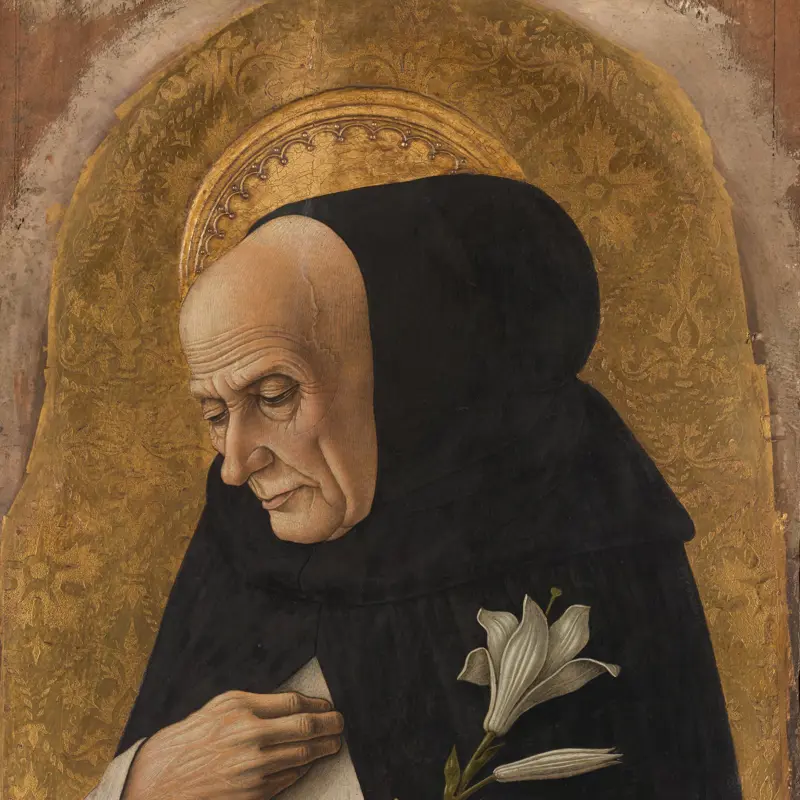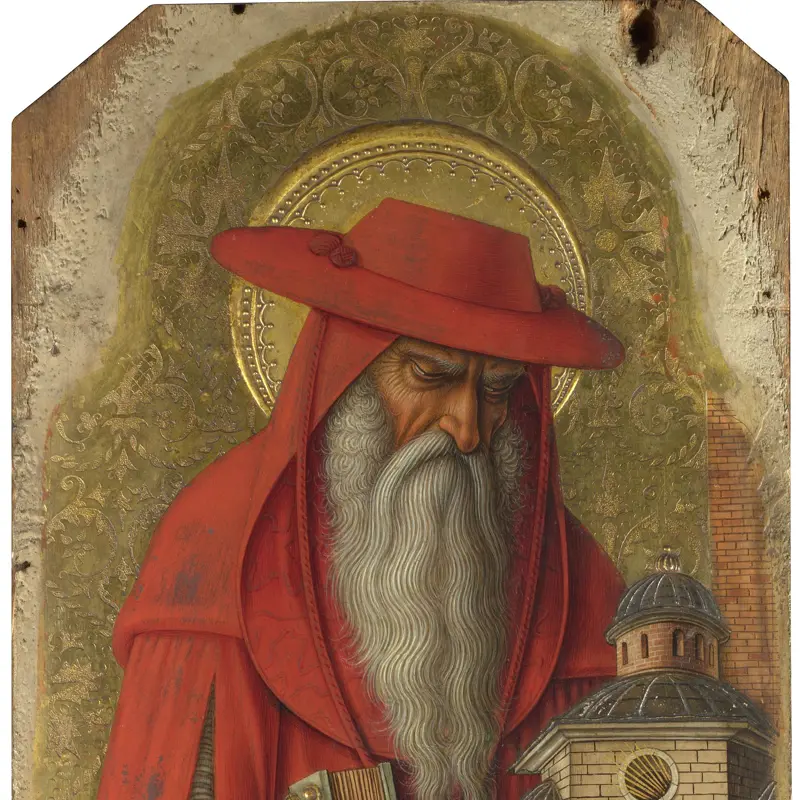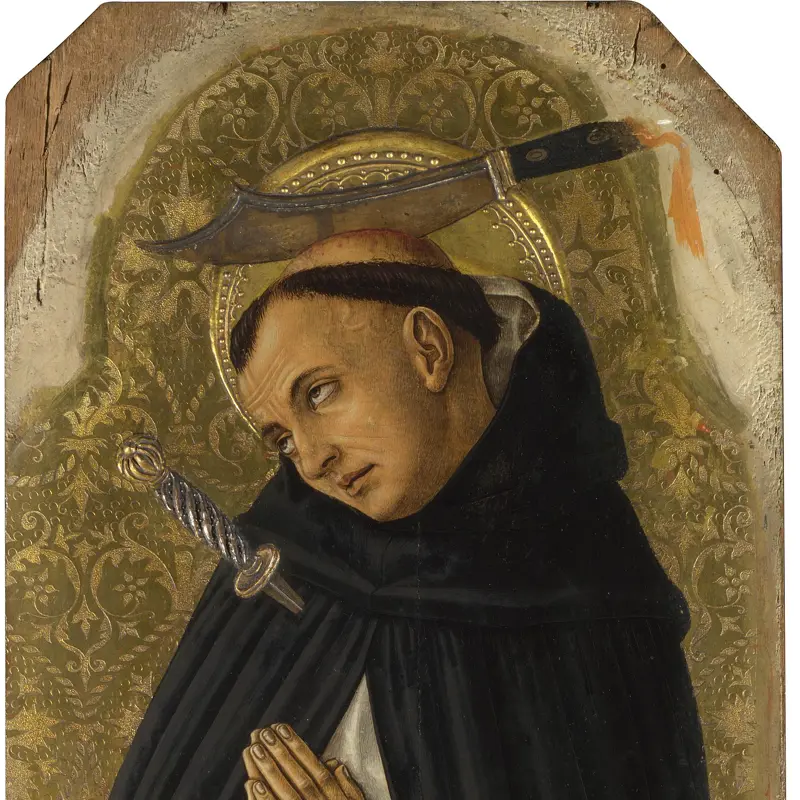Carlo Crivelli, 'Altarpiece from S. Francesco dei Zoccolanti, Matelica', after 1490
About the group
Overview
This large altarpiece was painted by Carlo Crivelli in 1491 for a family chapel in the Franciscan church in Matelica, a small town in the Italian Marches. The Ottoni were the local ruling family – you can see their coat of arms placed conspicuously on the bottom edge of the main panel.
The location heavily influenced the altarpiece’s design. The Ottoni chapel was tall and needed a tall altarpiece: including the frame and predella (the bottom tier) the painting is approximately 2.5 metres high. There was a large window on the back wall of the chapel – which was unusual – so the altar and altarpiece had to be on the side walls. This painting was on the left wall; the light in it comes from the upper right, mimicking the actual light in the chapel.
Key facts
Details
- Full title
- Altarpiece from S. Francesco dei Zoccolanti, Matelica
- Artist
- Carlo Crivelli
- Artist dates
- about 1430/5 - about 1494
- Date made
- after 1490
- Dimensions
- 247 × 185 cm
- Inventory number
- NG724
- Collection
- Main Collection
About this record
If you know more about this work or have spotted an error, please contact us. Please note that exhibition histories are listed from 2009 onwards. Bibliographies may not be complete; more comprehensive information is available in the National Gallery Library.
Works in the group
-
This large panel comes from an altarpiece painted in 1491 by Carlo Crivelli. It was made for the Ottoni family chapel in the Franciscan church at Matelica, in the Italian Marches.The Virgin, to whom the chapel was dedicated, appears crowned as the Queen of Heaven, with the Christ Child on her kne...
-
This predella (literally ‘platform’ or ’step‘, the bottom tier of an altarpiece) comes from a large altarpiece that Crivelli painted for the Ottoni family chapel in the Franciscan church at Matelica, in the Italian Marches.The scenes reflect the patrons’ different interests – one was a churchman,...
























